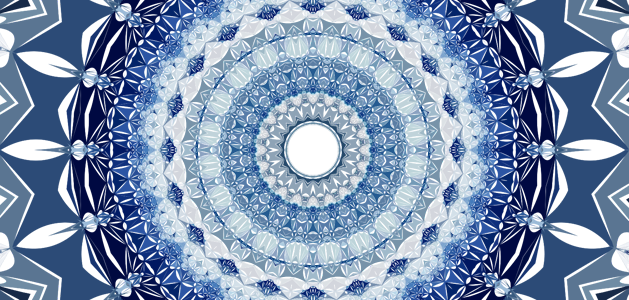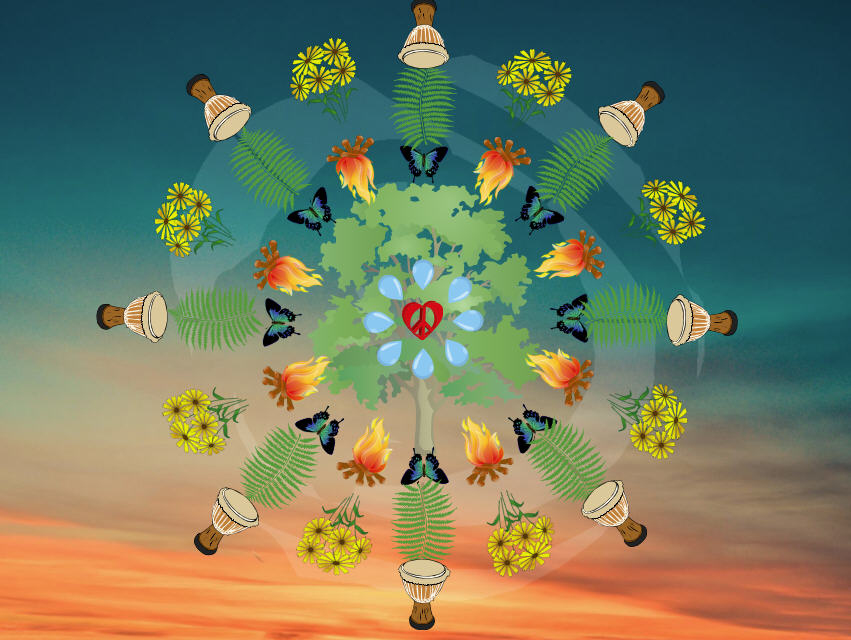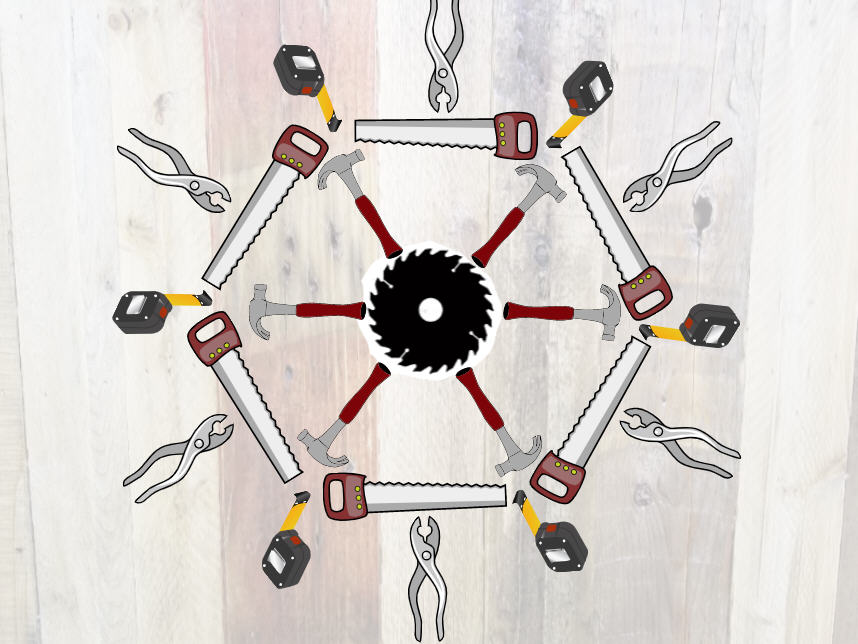
Students create their own mandalas to creatively apply elements of color, shape, and balance for self-expression and relaxation

Creating mandalas can help you relax, focus, and reflect. In this lesson, students will organize tangible objects, or digital images, to create a unique mandala.
Read Loreen Leedy’s Seeing Symmetry to engage your students in observing and wondering about math and shape in the world around them.
Introduce your students to examples of radial symmetry. They may be familiar with the way flower petals radiate from the center, or perhaps they have seen a picture of a rose window in a cathedral such as Notre Dame.
Mandalas are circular designs that use radial symmetry for balance. The word mandala comes from the Sanskrit word for circle, but mandalas can also be squares or a combination of squares and circles.

Mandalas have been around for thousands of years and show up in different cultures across the globe. While mandalas have historically been associated with spirituality, nowadays the term refers more broadly to any radial geometric artwork.

Students can easily create their own mandalas using:
Before you ask students to get started, choose the style, materials, and process that you think will work best for you and your learners.
A play-based approach to creating mandalas with tangible materials is great for young students learning to express themselves and follow mathematical rules, making for an engaging classroom center. Simply provide students with a collection of found objects or paper cut-outs along with time to play and create.
Take young children on a walk outside to find objects they can use to create a nature-themed mandala. Some of your students will respond to a reflective, quiet walk in nature to find the objects. Students who are more active and competitive will enjoy the walk as a quest or game to find multiple versions of the same object.
While mandalas are a form of radial symmetry, they have also historically been a form of meditation and a way to get to know oneself more completely. Making a mandala can help students reflect on their lives and their world.

Using a digital tool, like Wixie, to create a mandala provides students with unlimited access to a range of shapes they can use repeatedly. This makes it easy to create mandalas that reflect one’s interests, passions, and aspirations.
Before beginning a digital mandala, ask students to decide on the purpose. Have them use a cluster organizer to brainstorm or list symbols, images, and colors that reflect their experiences, feelings, and goals.

Download a Cluster organizer
You can provide students with a guide, such as this one, to help them more easily organize their designs. Students can then simply add images and shapes and duplicate them to create their mandalas.
If students draw their mandala forms, it may, once again, help to provide them with a guide they can use to add and connect lines to form shapes and draw images within the radial form.
Use a camera to capture images of students’ tangible mandalas or print the digital versions. Then, display the mandala images as an art exhibit in your classroom or school. Combine mandala images together to create a movie or run a slideshow for a digital art installation from your class or school website.

Reach out to a local coffee shop or small business to see if they are interested in showcasing student artwork outside of the school building. Host a “Meet the Artist” event to further connect with the community. Provide time for students to explain their choice of images and colors and what they represent.
Create a PDF or eBook of student mandalas, so students can enjoy browsing the collection on their devices at home. You can capture or export student work as image (JPG) files, and upload to a photo-sharing site for a range of print publishing options.
As you explore examples of mandala and rotational/radial symmetry, evaluate student’s initial reactions and their participation in discussions.
Use student’s mandalas, along with conversations and discussions between students, to evaluate their understanding of radial symmetry and balance.
If you are working with older students, you can also use their mandala artwork to assess skills like:
Create a checklist or rubric to help students remember the elements of art and apply them for artistic effect.
Loreen Leedy. Seeing Symmetry. ISBN: 0823427625
How to draw a mandala - YouTube video
Creating
1. Generate and conceptualize artistic ideas and work.
2. Organize and develop artistic ideas and work.
3. Refine and complete artistic work.
Performing/Presenting/Producing
5. Develop and refine artistic techniques and work for presentation.
Connecting
10. Synthesize and relate knowledge and personal experiences to make art.
6. Creative Communicator
Students communicate clearly and express themselves creatively for a variety of purposes using the platforms, tools, styles, formats and digital media appropriate to their goals. Students:
a. choose the appropriate platforms and tools for meeting the desired objectives of their creation or communication.
b. create original works or responsibly repurpose or remix digital resources into new creations.

Follow us on Instagram for daily inspiration

Create a thought web, cluster, flowchart, or other graphic organizer for a lesson
Five ideas for creative classroom centers
Creative, digital book reviews
Fun and powerful ideas with animated characters

Wixie
Share your ideas, imagination, and understanding through writing, art, voice, and video.

Rubric Maker
Create custom rubrics for your classroom.

Pics4Learning
A curated, copyright-friendly image library that is safe and free for education.

Wriddle
Write, record, and illustrate a sentence.

Get creative classroom ideas delivered straight to your inbox once a month.
Topics